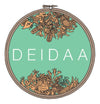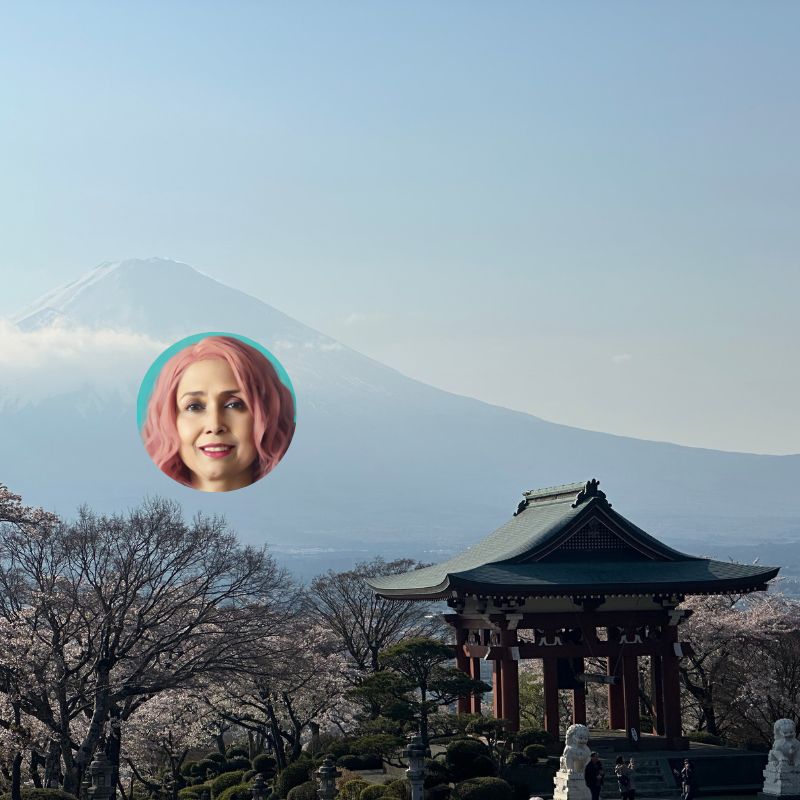When Japanese fashion designers like Rei Kawakubo entered the realm of Western they were criticized for the lack of form, structure and color. However they took the Western world by storm and changed the paradigms of Western fashion.
Japan: A Blend of Traditional and Modern
Japan is a unique blend of traditional and modern. High-rise buildings co-exist with palaces and temples. This is reflected in the works of Issey Miyake who combined science with centuries old artisan crafts.
Japan's contribution to Fashion and Textile Design
1. Kimono
In the kimono shape is created through fabric manipulation and not pleats and tucks
2. Mount Fuji. You can get your Mount Fuji inspiration aboard a vintage ship at Hakone.
3. Koi Fish often seen in streams, ponds, and zen gardens.
4. Waves
5. The Rising Sun
6. Chrysanthemum
7. Cherry Blossoms. Cherry blossoms or Sakura bloom in spring. Cherry blossoms are a major influence on Japonism and Japanese fashion and textiles
8. Cranes
9. Waterfalls
10. Zen Garden
Spirituality, cleanliness, and godliness are intrinsic to Japanese culture
Wabi Sabi is the Japanese concept of beauty in unusual places
The OTA Textile Museum
Japan is also home to traditional tie and dye techniques like block printing, indigo dyeing, and shibori. A great place to explore Japanese textiles is the OTA textile museum in Harajuku, Tokyo.
Japonism in Fashion
Japanese motifs on Western textiles were seen as part of Japonism in fashion. Japonism refers to a movement that began in the latter half of the 19th century.
Kimono- Japan’s National Dress
Kimono is a traditional Japanese garment. It is Japan's national dress. It is a wrap over dress with square sleeves and a rectangular body. A kimono is worn left over right unless the person happens to be deceased.
The kimono is worn with a broad sash or Obi, tabby socks and zori sandals.
The kimono is a sustainable garment. The patterns of a kimono are rectangular. They can be repurposed… unpicked into fabric, made into patchwork kimonos, children's kimonos, or used for furoshiki. Furoshiki is the art of wrapping gifts with fabric instead of paper.
A formal or a silk kimono can be expensive. It can range from a few thousand yen to over a million yen. The price of a kimono is determined by several factors for instance the fabric, the brand of the kimono, whether the kimono has been hand sewn, the material machine dyed and printed or hand-dyed and printed.
The lighter and more affordable Yukata has replaced the kimono as an everyday garment. Kimonos are still worn at funerals, weddings, graduation and formal events. Others who wear kimonos are the geishas and the Sumo wrestlers
If you are wearing a traditional kimono you need a dresser. Wearing a kimono you cannot walk fast, running is out of question.
A yukata is a lighter and a more affordable version of the silk kimono. A yukata is an informal summer garment made out of lighter fabrics like cotton, linen, or hemp. A Yukata is worn without so many inner layers.
Cultural Appropriation
Could I as a foreigner wear a kimono? I certainly could. Japanese were pleased to see me, a foreigner wearing a kimono. I could profess my love and affection for Japanese culture by wearing a kimono. While I was wearing a kimono androaming the streets of Kyoto, several people came up to me and said ‘beautiful’
You can hire a kimono for a day for around upwards of 5000 yen. Be prepared to pay extra for hair and makeup and certain accessories like the obijime, or the rope around the obi or the sash.
We flew out of Kansai airport in Osaka. Crowds at Kansai airport were on par with those at Narita airport. We were staying close to the Shin Osaka or Osaka Central railway station. We took an early morning airport train to Kansai Airport.
I was lucky to have the opportunity to explore Japanese fashion and culture. Japan has made significant contributions to the fashion and textile industry. Japan's unique blend of traditional and modern elements continues to inspire and influence designers worldwide.
Sayonara Japan. Till we meet again.

